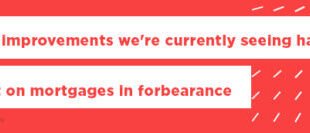
Conventional mortgage loans are the most common type of mortgage loan used today.
There are different types of conventional loans requiring between 3%-20% down.
This is a complete list of all conventional loan requirements, guidelines, eligibility, and what you need to qualify.
RATE SEARCH: Find and Compare the Best Mortgage Rates
Conventional Loan Borrower Requirements
Conventional loans require a 620 credit score, 3%-20% down, and a maximum debt-to-income ratio between 43%-50% depending on the type of conventional loan program you qualify for.
2020 Conventional Loan Requirements |
|
Conventional Loan Credit Requirements
Mortgage lenders don’t just look at your credit score, they look at your entire credit report to determine eligibility and loan terms.
Derogatory credit history such as late payments, collection accounts, and excessive debt will affect your ability to qualify regardless of your credit rating.
Conventional Loan Credit Requirements |
|
Bankruptcy/Foreclosure Waiting Period
If you have had a bankruptcy, foreclosure, or short-shale there is a waiting period before becoming eligible.
If you have extenuating circumstances that resulted in a loss of income such as a job loss, reduction of income, or medical emergency. Underwriters are looking for borrowers to recover from the economic hardship with an improved credit score and multiple open accounts in good standing.
Derogatory Event | Waiting Period | Waiting Period with Extenuating Circumstances |
Bankruptcy – Chapter 7 or 11 | ||
Bankruptcy – Chapter 13 |
|
|
Multiple Bankruptcies | Five years from the most recent discharge or dismissal date | 3 years from the most recent discharge or dismissal date |
Foreclosure |
| |
Deed-in-Lieu of Foreclosure, Short-sale |
Down Payment Requirements
Conventional loans require a down payment between 3%-20% of the purchase price depending on which type of conventional loan you qualify for.
Conventional Loan Type | Requirements |
Conventional 95 | 5% down payment, 620 credit score, PMI required |
Home Possible | First-time homebuyer, 3% down payment, income limits |
Conventional 90 | 10% down payment, 620 credit score, PMI required |
Piggyback 80/10/10 | 80% LTV conventional loan, 10% second loan, 10% down, no PMI |
Fannie Mae program for first-time homebuyers with 3% down & 620 credit score | |
Conventional 97 | 3% down payment, 680 credit score, no income limits, PMI required |
The down payment cannot be a loan. You will need to provide 2-3 months of bank statements showing you have the funds in savings. The down payment can also be can be a gift from a friend or family member.
Conventional Loan Down Payment Guidelines |
|
3% Down Conventional Loans
First-time homebuyers generally have lower credit scores and less money to put down than other buyers. Because of this, Fannie Mae and Freddie Mac, the two biggest buyers of conventional mortgage loans created 3% down payment mortgage loan programs for first-time homebuyers.
HomeReady and Home Possible Loans
The Fannie Mae HomeReady and Freddie Mac Home Possible loan programs were designed to offer a low down payment loan option for low-income first-time homebuyers.
They require just a 3% down payment, 620 credit score, and allow for up to a 50% DTI ratio. You must be a first-time homebuyer and not exceed the income limit of 80% of the area median income.
2020 HomeReady™ Home Possible Loan Requirements |
|
Conventional Loan Limits
The loan limit in low-cost areas is $ 510,400. There are higher costs areas such as Los Angeles and New York, where the loan limit reached $ 765,600. This is much higher than the FHA loan limits of $ 331,100 and $ 625,050 in the highest areas.
2020 Conventional Loan Limits | ||
Low-Cost area loan limit | High-Cost area loan limit | |
$ 1,184,925 | ||
$ 1,472,550 | ||
Private Mortgage Insurance (PMI)
Conventional home loans require private mortgage insurance (PMI) with less than a 20% down payment. PMI will be canceled once the loan-to-value ratio reaches 78%.
Private mortgage insurance companies base their rates on the borrower’s risk profile including, credit score, down payment, and income. The higher your credit score and down payment the lower the PMI rate will be.
DTI (Debt-to-income)
Your debt-to-income ratio (DTI ratio) is the amount of monthly debt obligation you have compared to your income. Typically, conventional loans have a maximum debt-to-income ratio of 43%.
The DTI ratio can be stretched to 45% in some cases, and maybe even higher if you have strong compensating factors such as a large down payment, large cash reserves, or an excellent credit score.
Compensating factors for high DTI ratios
- High down payment (Over 20%)
- Excellent credit score (700+)
- Large cash reserves
- High income
- 5+ years at current position/employer
Eligible Property Types
A great benefit of a conventional mortgage is that they are available on many types of properties. They also have less strict property requirements than FHA loans so you can buy fixer-uppers and uncompleted homes.
Conventional Loan Eligible Property Types |
|
Conventional Loan Rates
Conventional Loan Rates (October 2020) | ||
Interest rate | ||
30-year fixed-rate mortgage | ||
15-year fixed-rate mortgage | ||
5/1 adjustable-rate mortgage | ||
Check Today’s Mortgage Rates and Compare Offers
Using a Conventional Loan for an Investment Property
You can use a conventional mortgage to buy investment properties to either fix and flip or keep as a rental property. If you’re buying an investment property, you will need to get a conventional loan because government-backed loans such as FHA and VA are only available to owner-occupied borrowers.
Real estate investors can use conventional loans to purchase an investment property in good condition or one in need of repairs.
- Primary residence
- Second home/Vacation home
- Fix and flip properties
- Rental homes
The Bottom line
Conventional loans offer a wealth of benefits and are the most used type of home loan used today.
Whether you are planning to occupy the property, buying a second home, or an investment property, a conventional mortgage is a great option.
If you’re looking into purchasing a home in the near future, you should speak to a lender about getting pre-approved for a mortgage.
COMPARE LOAN OFFERS: Search Lenders and Compare Rates



